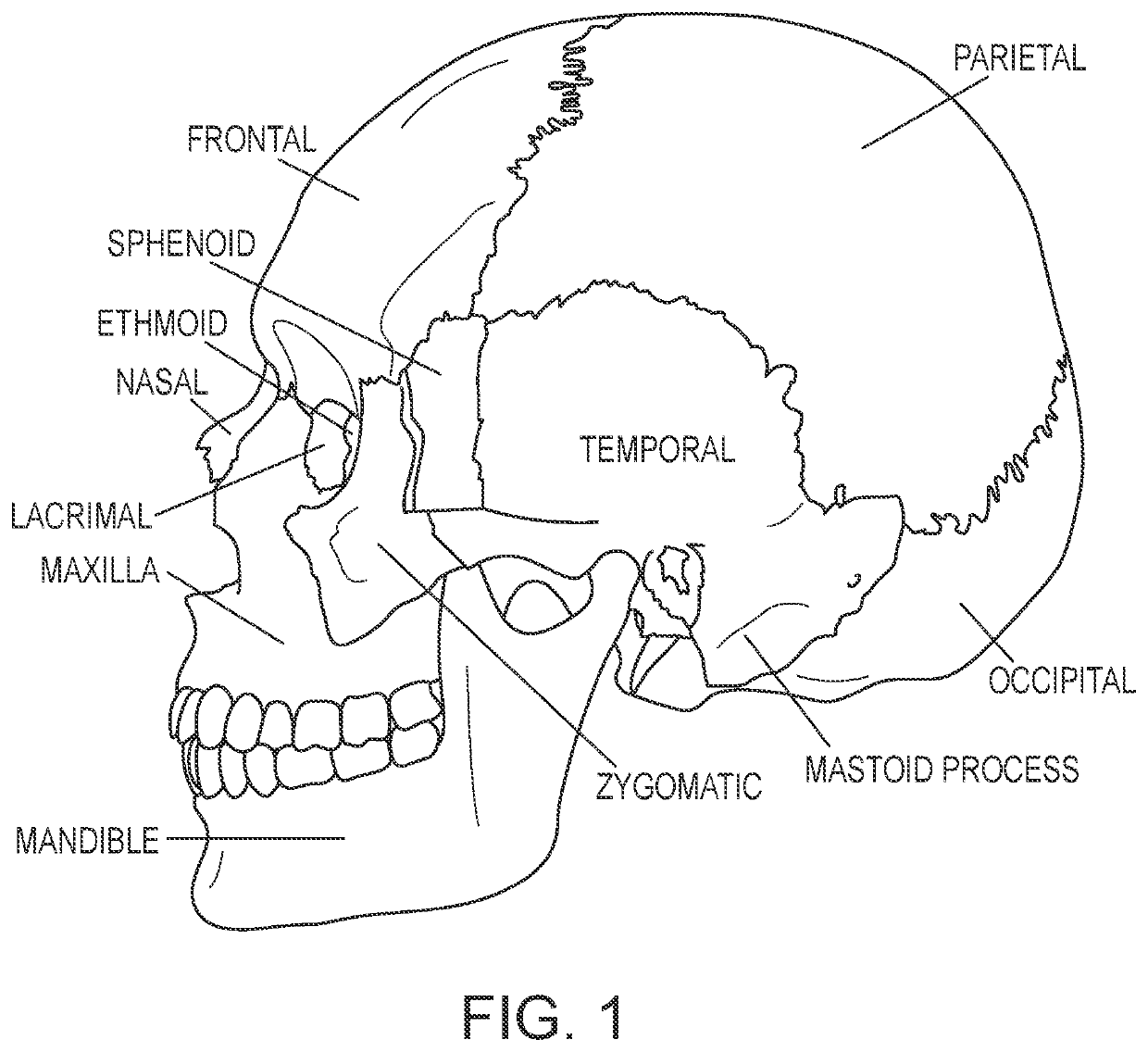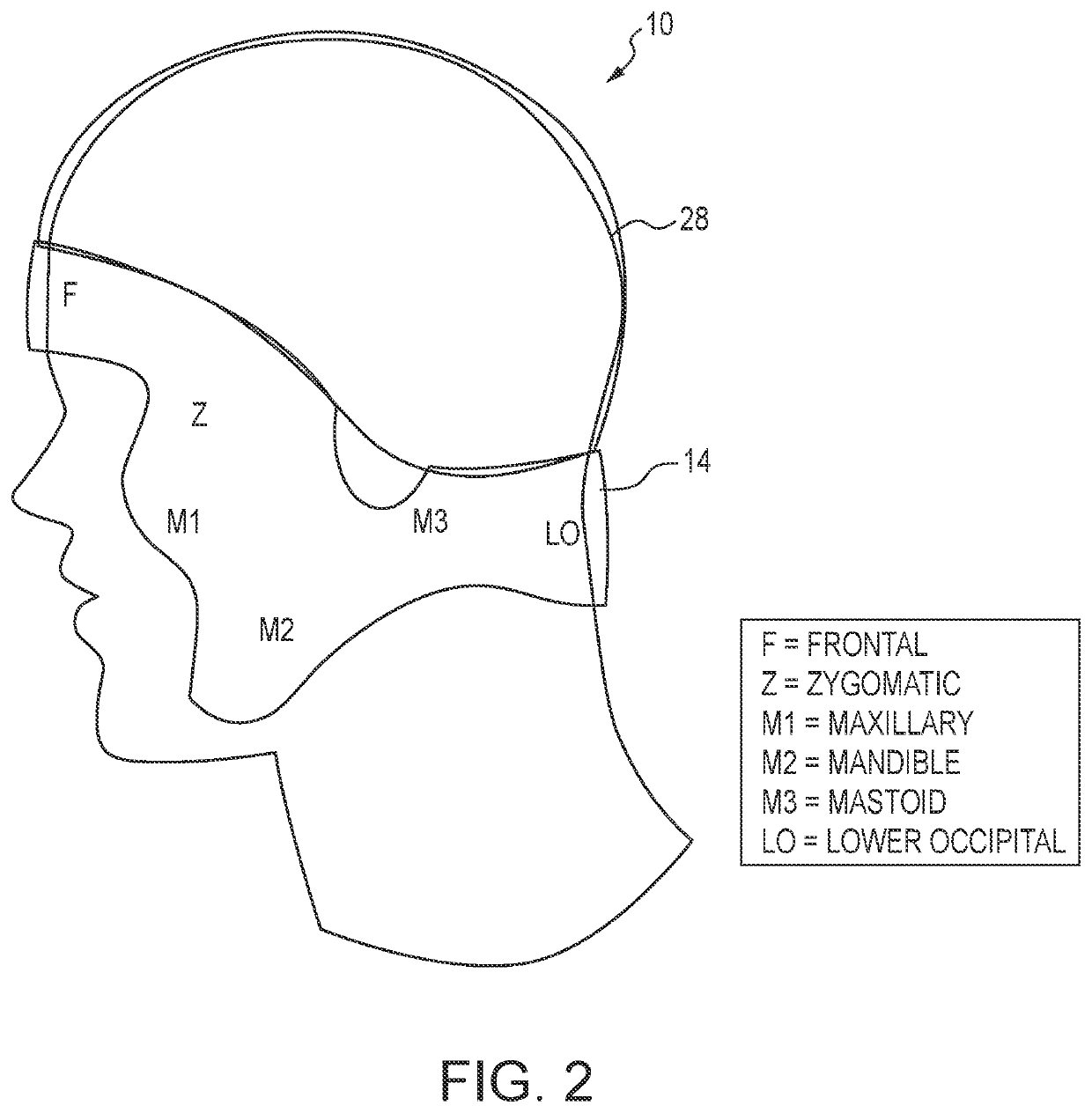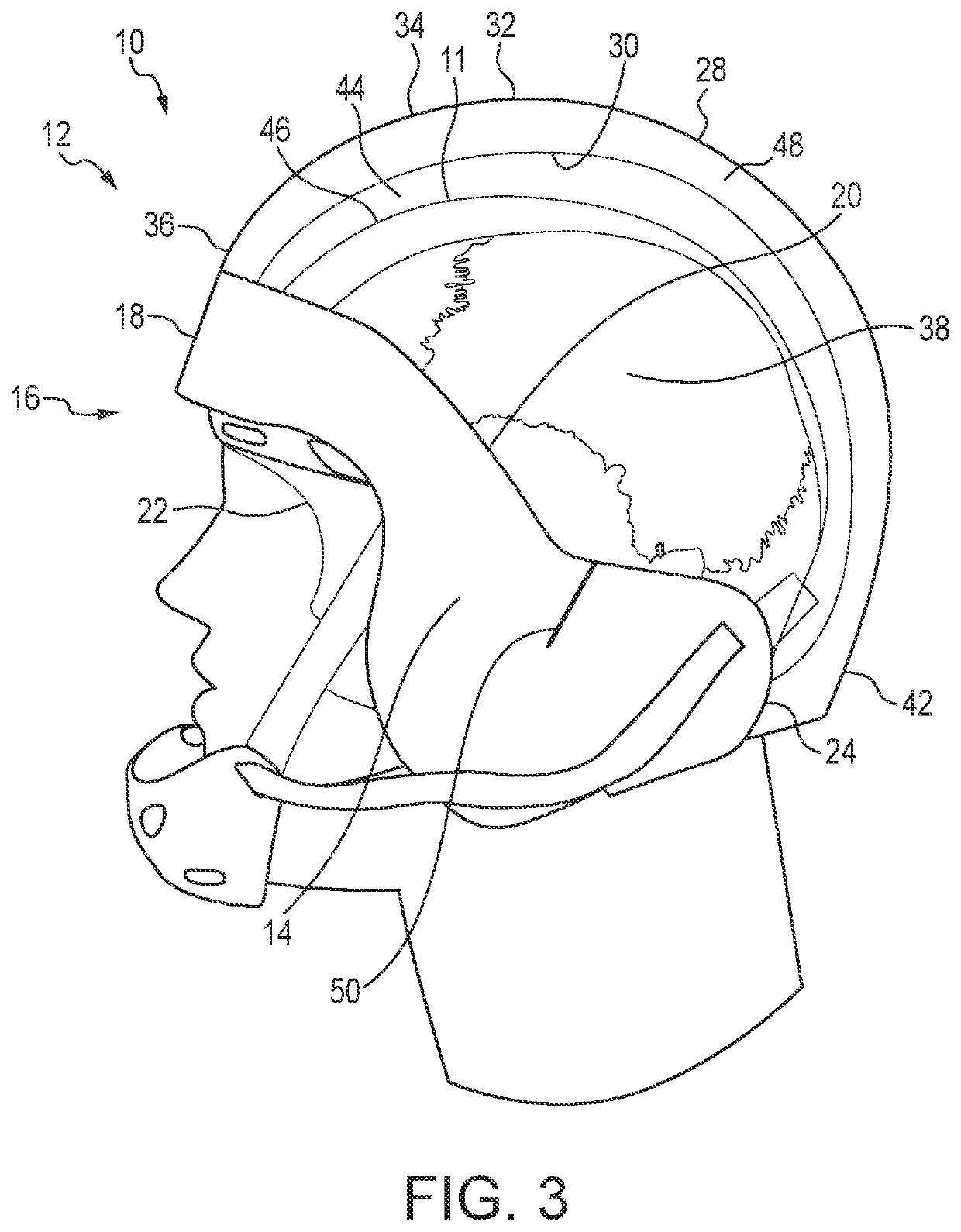Such forces are transferred to the brain resulting in damage to the neuronal tissue.
Stretching of the neuronal axons will disrupt their overall physiologic functioning and culminate in
concussion symptoms.
While acute concussions inherently receive the most attention from the general public, the insidious, cumulative, sub-concussive repetitive head impacts (RHI) may
pose an equal or greater risk in the development of delayed NPD / CTE.
Youth football participation has significantly declined in recent years, due in large part to parental safety concerns regarding potential head and / or brain injuries.
Other than incremental improvements in materials utilization, external shell strength / deformation properties, padding integrations, and overall aesthetics, this basic design has remained essentially unchanged for over a half-century; however, during this same period of time, players have become bigger, faster, and stronger, which translates to a concomitant increase in potential supraphysiological dynamic force
exposure on the field of play.
Contemporary plastic shell football helmets have markedly reduced
skull fractures compared to their pre-1950 leather predecessors, but they have offered limited benefits for
concussion prevention.
Such a conclusion likely confirms that protective equipment applied as a single unit that directly contacts the surface area of the head simply is incapable of sufficiently attenuating the complex
mechanical force transmission responsible for concussions.
Most football head impacts are a complex combination of linear and rotational accelerative mechanical forces, which may cause an intense transient torsional strain on the brain and worsen with secondary rebound from the more compliant helmet components (i.e., foam lining that compresses upon
impact and rebounds).
As stated previously, concussive events are likely only one of several factors posing risks to long-term brain health in certain players, and the accumulation of sub-concussive hits / RHI may present an equal or greater risk.
Football concussions have relatively decreased over the last several years (although there was an increase within the NFL during the 2019 season), most likely due to a combination of modifications in practice methods / culture, coaching, officiating emphasis, tackling technique, and rules; however, despite such efforts and helmet technology improvements, the potential for a
concussion persists due to the inability to eliminate the complex accelerative and rotational forces inherent in the
high frequency collision sport that is American football.
As noted above, in some instances, protective equipment applied exclusively to the head simply is incapable of sufficiently attenuating the complex
mechanical force transmission responsible for concussions.
Furthermore, the hard-shell helmets with foam linings do not provide ample dampening of the forces and may transfer greater forces to the
brain tissue.
The following corollary from that conclusion most likely also applies: Protective equipment applied exclusively to the head is incapable of sufficiently attenuating and reducing the myriad of sub-concussive head impacts sustained in football and other collision sports.
Most football head impacts are a combination of complex linear and rotational accelerative mechanical forces, which may cause an intense transient torsional strain on the brain and worsen with secondary rebound from the more compliant helmet components (i.e., foam lining that compresses upon
impact and rebounds).
As stated previously, concussive events are likely only one of several factors posing risks to long-term brain health in certain players, and the accumulation of sub-concussive hits / RHI may present an equal or greater risk.
Tissue fatigue is due to long term repetitive
cyclic loading at subthreshold forces that if applied one to two times to tissue may not induce short or long-term injury; however, if the subthreshold force is repetitively transferred to the tissue, the tissue will eventually suffer injury.
While helmets ostensibly reduce
impact intensity or the overall force transmission ultimately absorbed by the brain
soft tissue itself, no current head
protective system offers a practical means to reduce RHI frequency.
Football concussions have relatively decreased over the last several years (although there was an increase within the NFL during the 2019 season), most likely due to a combination of modifications in practice methods / culture, coaching, officiating emphasis, tackling technique, and rules; however, despite such efforts and helmet technology improvements, the potential for a concussion persists due to the inability to eliminate the complex accelerative and rotational forces inherent in the
high frequency collision sport that is American football.
Despite best efforts by players, the high-speed dynamic nature and action of the game does not permit complete
elimination of such helmet-to-helmet contacts, and unintentional / unavoidable head-to-head collisions are inevitable.
 Login to View More
Login to View More  Login to View More
Login to View More 


